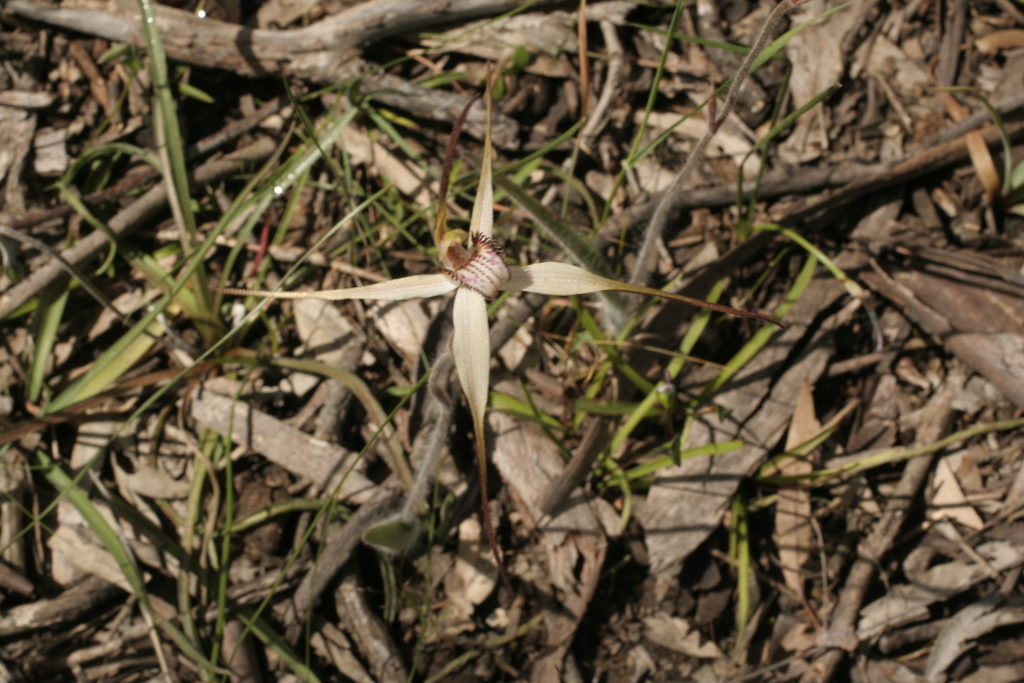Caladenia fulva
G.W.CarrFlowering plant 12–25 cm tall, stem dark-coloured. Leaf 5–12 cm long, 6–8 mm wide, blotched with red at base. Flowers 1 or 2; perianth segments strongly drooping, 5–8 cm long, whitish-cream or yellowish to pinkish with reddish stripes and very dark, glandular tips; sepals flattened at base, 3–7 mm wide, abruptly tapered to a long tail densely covered in glandular hairs; petals shorter than sepals but otherwise similar. Labellum curved forward with apex recurved and lateral lobes erect, lamina ovate, obscurely 3-lobed, 15–18 mm long and 10–12 mm wide (when flattened), pinkish or reddish, distinctly darker towards apex; margins of lateral lobes fringed with pale-tipped, bent calli to 2.5 mm long, margins of mid-lobe with shorter calli becoming tooth-like near tip; lamina calli in 4 or 6 rows, extending onto mid-lobe, narrow, foot-shaped, c. 2.5 mm long at base of lamina, decreasing in size towards apex. Flowers Sep.–Oct.
Wim, Gold. Known only from open ironbark/yellow gum forests on shallow clay loams in the Stawell area.
Caladenia fulva is distinguished by its whitish-cream to pinkish perianth segments with usually strongly drooping, heavily glandular tips, and the pinkish to reddish labellum. Note, however, that some plants apparently referable to C. fulva can have greenish perianth segments and/or a mostly white labellum. The circumscription of this taxon and its relationship with C. magnifica and C. patersonii requires clarification.
Entwisle, T.J. (1994). Orchidaceae. In: Walsh, N.G.; Entwisle, T.J., Flora of Victoria Vol. 2, Ferns and Allied Plants, Conifers and Monocotyledons, pp. 740–901. Inkata Press, Melbourne.
 Spinning
Spinning

